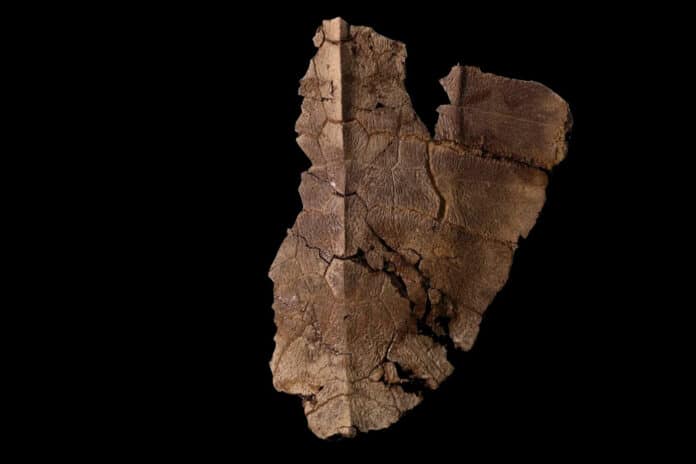There are now just seven different species of sea turtles. They include the olive ridley and the Kemp’s ridley, both members of the genus Lepidochelys. The evolutionary history of this genus needs to be better understood due to the lack of an undisputed fossil record for the group.
A discovery by the Smithsonian Tropical Research Institute in Panama describes a partially preserved carapace from the Upper Miocene Chagres Formation of Panama, which represents the oldest fossil record of Lepidochelys. Scientists discovered the remains of a turtle shell with traces of DNA.
The fossil discovery reveals that this turtle lived in Panama in the upper Miocene Epoch about 6 million years ago. The planet was becoming colder and drier, with ice building up in the poles, declining sea levels, and less rainfall.
Scientists also discovered traces of DNA in the fossil bones of this turtle. They employed a solution known as DAPI to check for the existence of the genetic material after identifying preserved bone cells (osteocytes) with nucleus-like features.
Dr. Edwin Cadena of the Universidad del Rosario in Bogotá, Colombia, said, “Within the entire vertebrate fossil record on the planet, this had only been previously reported in two dinosaur fossils, including one of Tyrannosaurus rex, referring to the ancient DNA.”
This finding makes the fossil vertebrates preserved on the Caribbean coast of Panama highly significant to understanding biodiversity at the time of the formation of the Isthmus of Panama, which separated the Caribbean from the Pacific and joined North and South America, as well as for understanding the preservation of soft tissues and possible original living matter like proteins and DNA, vital elements of an emerging field known as Molecular Paleontology.
Carlos De Gracia, co-author of the study, said, “The Caribbean fossils from Panama that we have managed to rescue over the years are helping to rewrite the history of marine vertebrates of the Isthmus.”
Journal Reference:
- Edwin-Alberto Cadena, Carlos De Gracia, Diego A. Combita-Romero et al. An Upper Miocene marine turtle from Panama that preserves osteocytes with potential DNA. Journal of Vertebrate Paleontology. DOI: 10.1080/02724634.2023.2254356
